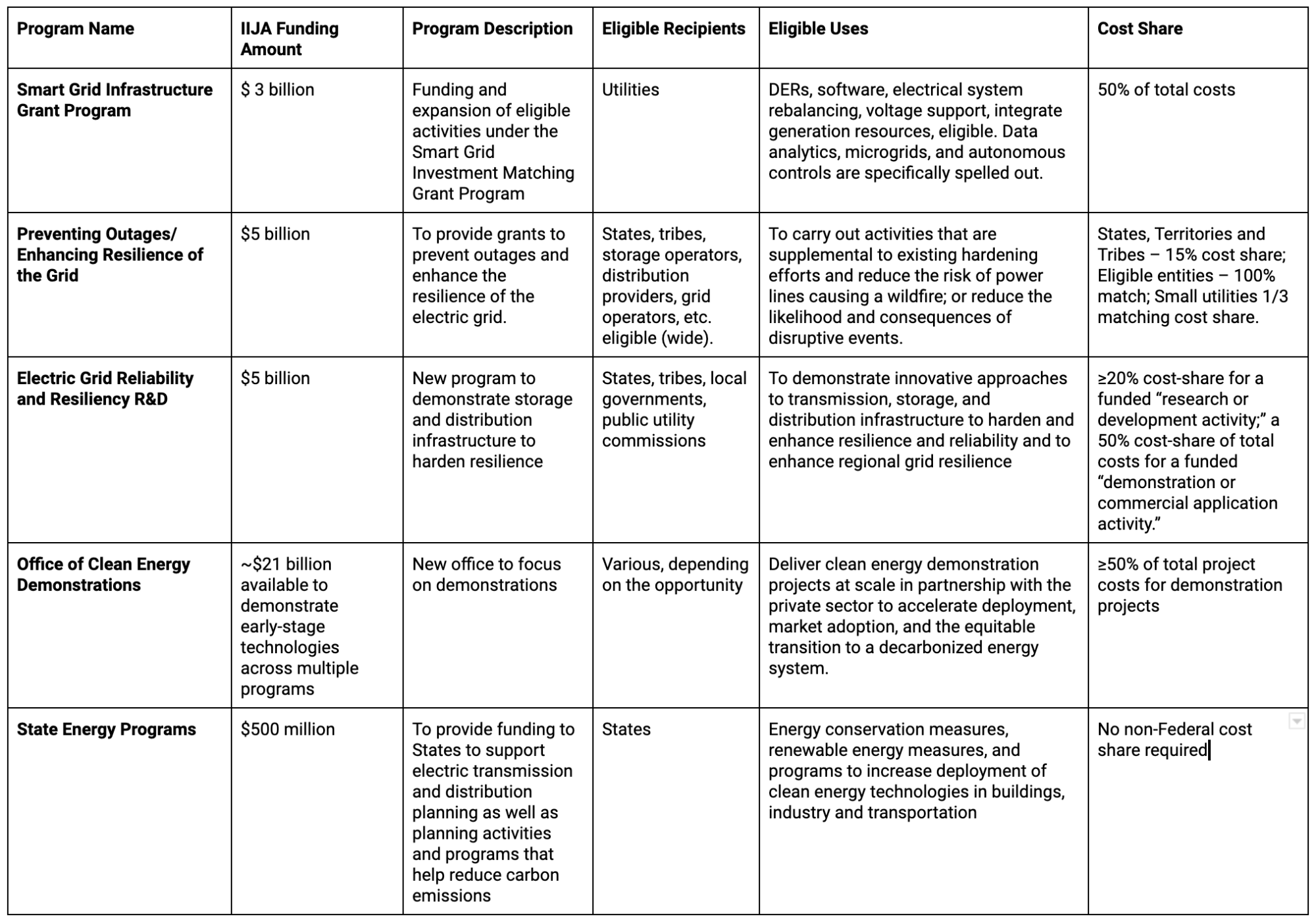Between major federal policy wins in the Inflation Reduction Act (IRA) and the Infrastructure & Investment Jobs Act (IIJA), coupled with a variety of successful state-level initiatives (particularly in California and Colorado), the Microgrid Resources Coalition (MRC) accomplished quite a lot in 2022. The combination of tax credits, grant funding and a host of other economic incentives made available at multiple levels of government, will amount to hundreds of millions of dollars in investments in microgrids and microgrid-related technologies over the next several years.
Here’s a look back at what made 2022 a banner year for the advancement of microgrids throughout the US.
Federal Level
Inflation Reduction Act
The IRA made history last summer as the single largest investment in climate and energy in US history. Within this robust bill is a 30% Investment Tax Credit for microgrid controllers used in eligible projects that originated out of Congressman Panetta’s (D-CA) MICROGRID Act. Many distributed energy resources (DERs) that comprise microgrids also received big boosts either becoming eligible for tax credits for the first time (e.g., standalone storage and linear generators) or having eligibility extended (e.g., solar, fuel cells, microturbines and combined heat and power).
Infrastructure Investment & Jobs Act
While the Infrastructure Investment and Jobs Act (IIJA) was technically signed into law in November 2021, much of its implementation and impact was felt in 2022. This included:

FEMA: Building Resilient Infrastructure & Communities (BRIC)
FEMA’s BRIC grant program makes competitive grant funding available to state and local governments, tribes and territories to help bolster community resilience by addressing future risks from natural disasters, including wildfires, drought, hurricanes, earthquakes, extreme heat, and flooding. The IIJA made an additional $1 billion of BRIC funding available over five years (FY2022 – FY2026), which is incremental to a 6% set-aside committed annually by FEMA from pre-existing programmatic funds.
Notably, under the BRIC program, the District of Columbia was awarded almost $20 million to construct the first FEMA-funded microgrid project in the country. Designed to support a number of critical loads on the St. Elizabeth’s Hospital Campus, once operational, the microgrid will provide a redundant and resilient power source to support reliable access to health care and emergency services for DC residents, including disadvantaged populations.
FY2023 Appropriations
Congress passed its annual federal appropriations, which included in U.S. Dept. of Defense (DoD) spending, language to support the Army’s deployment of “multi-resource microgrid configurations that incorporate dispatchable, fuel-flexible, renewable-fuel-compatible, distributed generation technologies, paired with variable output renewable resources and battery storage technology” in order to “achieve substantial emissions reductions, provide multi-week resilience, and improve energy security.” See H.Rept. 117-388, p. 179.
Over the past two years, Congress has now appropriated $16.5 million of funding for Army microgrid research, development, testing and evaluation. See Explanatory Stmt. for Div. C – FY2023 Dept. of Defense Appropriations, p. 195. Tens of millions in additional appropriations have been directed in recent years towards various installation and operational energy programs that include microgrids, underscoring the importance of strengthening readiness and resilience across multiple branches of the DoD.
State Level
California
Led by our Senior Advisor and western advocate, Allie Detrio, the MRC was busy in California in 2022, advocating to incentivize microgrids to provide reliability services and emergency load reduction when the grid is stressed. The Golden State ultimately allocated substantial funding in the state budget for microgrids technologies, community resilience, and grid reliability solutions. Energy trailer bill (AB 205) funding for which microgrids are eligible included:
$550 million authorized to establish the Distributed Electricity Backup Assets Program. Administered by the California Energy Commission, the program is intended to incentivize construction of zero- and low-emissions distributed energy technologies that are capable of serving as on-call emergency supply or load reduction for California’s grid during extreme events.
$200 million authorized for load reduction and demand response through the Demand Side Grid Support Program.
$85 million directed to the Strategic Growth Council for Community Resilience Centers. The funding can be used for a wide range of activities, including enabling communities to build clean energy microgrids for critical and community facilities.
$49 million in new funding allocated to the Climate Catalyst Revolving Loan Fund at California’s I-BANK and microgrids are explicitly eligible for low-interest loans under the program.
The successes realized in 2022 were a function of our collaboration with the Climate Center and a diverse coalition of other advocates rallying around the shared goal of advancing community energy resilience planning and implementation. And with similar collaboration moving forward, opportunities for microgrid funding should continue to proliferate in 2023.
Colorado
In 2022, the Colorado legislature enacted two key bills, both of which can be expected to drive microgrid growth across the state.
Electric Grid Resilience & Reliability Roadmap (HB22-1249) – MRC Executive Director, Pierson Stoecklein, attended Governor Polis’ signing ceremony of this precedent-setting legislation, which directs the Colorado Energy Office to develop a strategic roadmap for deploying microgrids in Colorado in support of grid resilience and reliability.
Microgrids for Community Resilience Grant Program (HB22-1013) – Makes available to cooperative electric associations and municipally owned utilities, grant funding to finance microgrid development in eligible rural communities that are at significant risk of experiencing severe weather or natural disaster events.

MRC Executive Director Pierson Stoecklein joined Colorado Governor Jared Polis as the Electric Grid Resilience & Reliability Roadmap (HB22-1249) was signed into law.
Hawaii (Honorable Mention)
We’d be remiss if we didn’t mention Hawaii. In 2018, the MRC was heavily involved with Phase 1 of the Hawaii Public Utility Commission (HPUC) proceeding (Docket 2018-0163) intended to create a Microgrid Services Tariff for projects capable of providing resilience and islanding in black sky conditions.
In 2022, the Commission opened a second phase of the proceeding to consider how microgrids can provide grid services and other benefits to the utility distribution system in blue sky conditions. The HPUC will be continuing this work in 2023 and beyond.
Suffice it to say, a lot happened in 2022, and the MRC doesn’t anticipate things slowing down in 2023. In addition to the work we have planned with the recent launch of our Texas Chapter, we have our sights set on making waves in the Northeast next. Stay tuned….